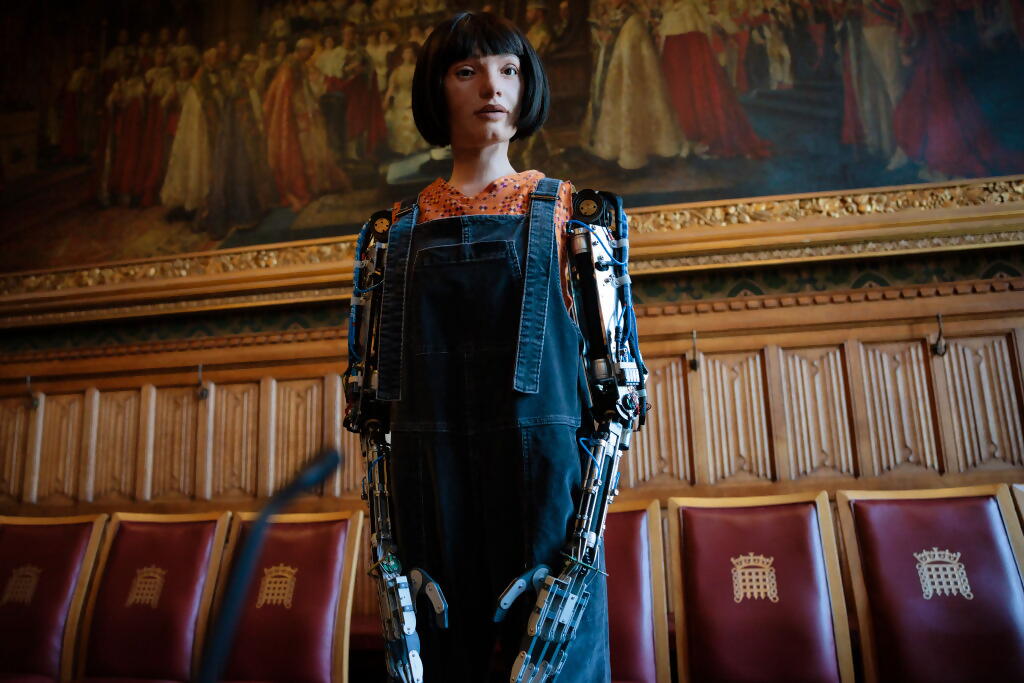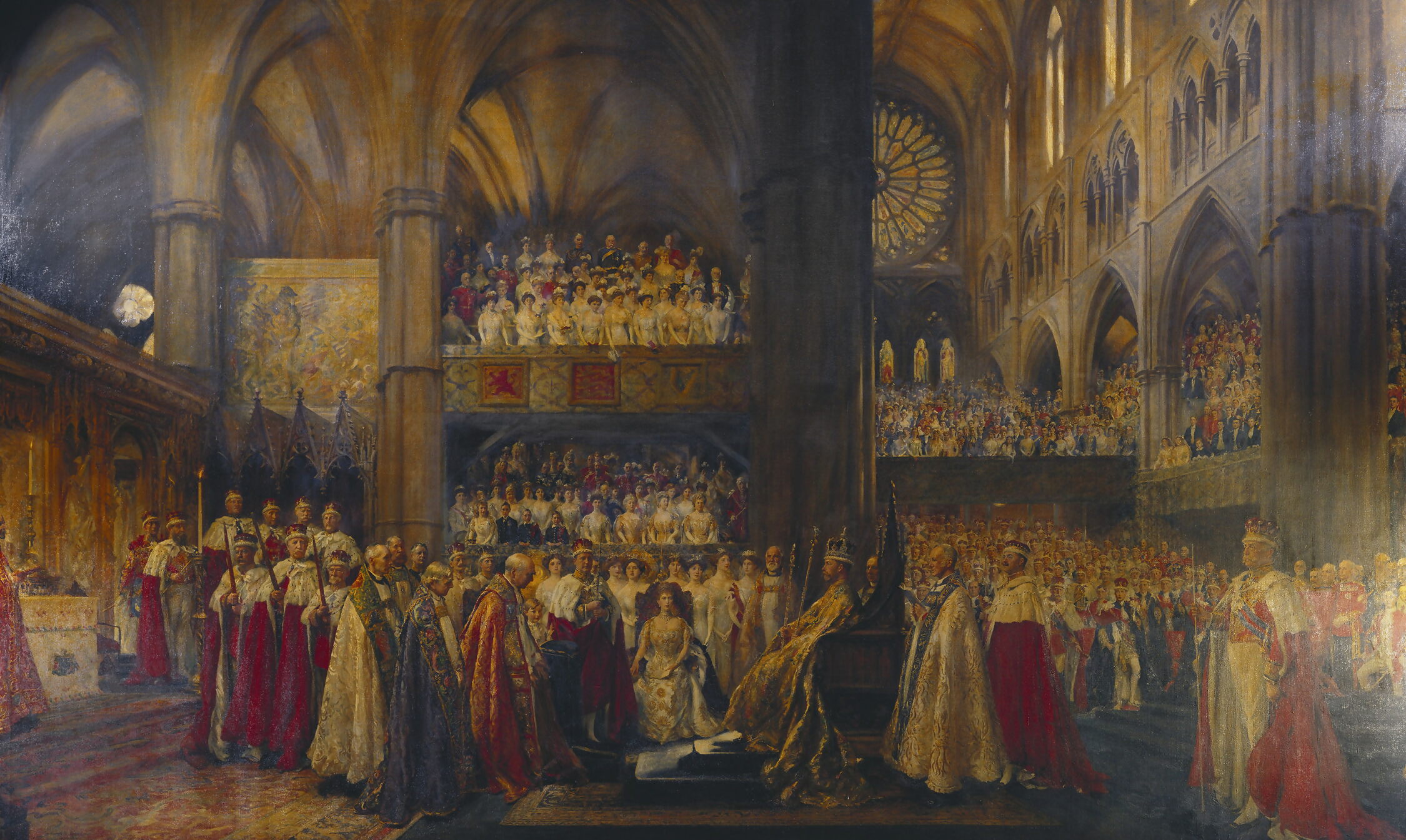
Above: Ai-Da Robot Makes Speech To The House Of Lords. London, England. October 11, 2022
The story of art has always been driven by technology. Take the invention of the camera. After photography, painters fell into two camps: those who stuck to traditional figurative styles, and those who tore up the rule book and redefined ways of seeing. The British painter John Henry Frederick Bacon, who you’ve probably never heard of, belonged to the first group, painting pretty portraits of royal ceremonies while Van Gogh and Picasso were scrambling the picture plane. Technically competent but artistically limp, Bacon’s paintings already belonged to the past. The camera had made him obsolete.
So it’s appropriate that Bacon should turn up here, in this photograph of the robot Ai-Da, taken on Tuesday by Rob Pinney. The picture was snapped moments before Ai-Da gave her – sorry, its – maiden speech to the House of Lords, entitled ‘A Creative Future’. Before a room full of baffled-looking barons, baronesses, bishops, and other esteemed elites, the robot discussed whether creativity in the UK is under attack from technology and the role of Artificial Intelligence in creative industries. And there in the background, watching history repeat itself, is Bacon’s painting ‘The Coronation of King George V’.

The Coronation of George V by John Henry Frederick Bacon
Pinney’s photo perfectly captures the extremes of past and future that define our national spirit. Look at the room itself – all gilt frames and wood panelling – reminding us that policy is still made in Neo-Gothic palaces, and that kings still get crowned by officiators in fur-trimmed cloaks (here’s looking at you, 6th of May 2023). But then look at Ai-Da, here to signal an accelerating future, where robots paint pictures, write poems, and talk about the fusion of art and technology.
The photo itself is strange – and not just because it depicts a robot in the House of Lords. Why is Ai-Da looming over us like this? Why is the room at a tilt? Why is the balance of light and shade so compelling? The answer lies in Ai-Da’s gaze, the only thing that is as straight as an arrow (everything else is at an angle) and in sharp focus. But it’s not us she’s looking at.
Her right eye, cloaked in shadow, may have the illusion of humanity, but the natural daylight that bathes her left exposes her artificiality. And that manic, almost malfunctioning eye is confronting another artificial eye: the lens of the camera. Part of what is so strange about this photo is that we’re observing a standoff between two technological rivals.
But there’s more to it than that. What’s really bizarre here is that, in the tussle between past and future, the present seems to be missing. There is nothing in this image that says 2023. Except, of course, the photograph itself. Because between Bacon’s old world and Ai-Da’s techno-futurism, it’s the camera lens that bridges the gap, by creating chance visual encounters.
Look at Ai-Da’s left hand, for example: the crosshatch pattern of her metal skeleton echoes the portcullis design of the parliamentary logo that adorns the red leather seats. Only the camera could have stumbled on such perfect visual harmony. Or notice how the pleated pattern on the wood panelling chimes with the seam detail on Ai-Da’s dungarees. Even the pixel motif on her shirt seems to echo the prints and colours of the ceremonial dresses in Bacon’s painting. These similarities aren’t simply there in real life; they’re created by the camera’s ability to light, frame, and capture.
100 or more years after Bacon and the death of figurative painting, perhaps the camera is the next technology to become obsolete – at least, that’s what Ai-Da’s confrontational stare suggests. But then again, perhaps not. Because for all her algorithms and artificial intelligence, Ai-Da lacks spontaneity. True, the camera may be another mechanical object – but only a human could create such a charged image at the click of switch.

